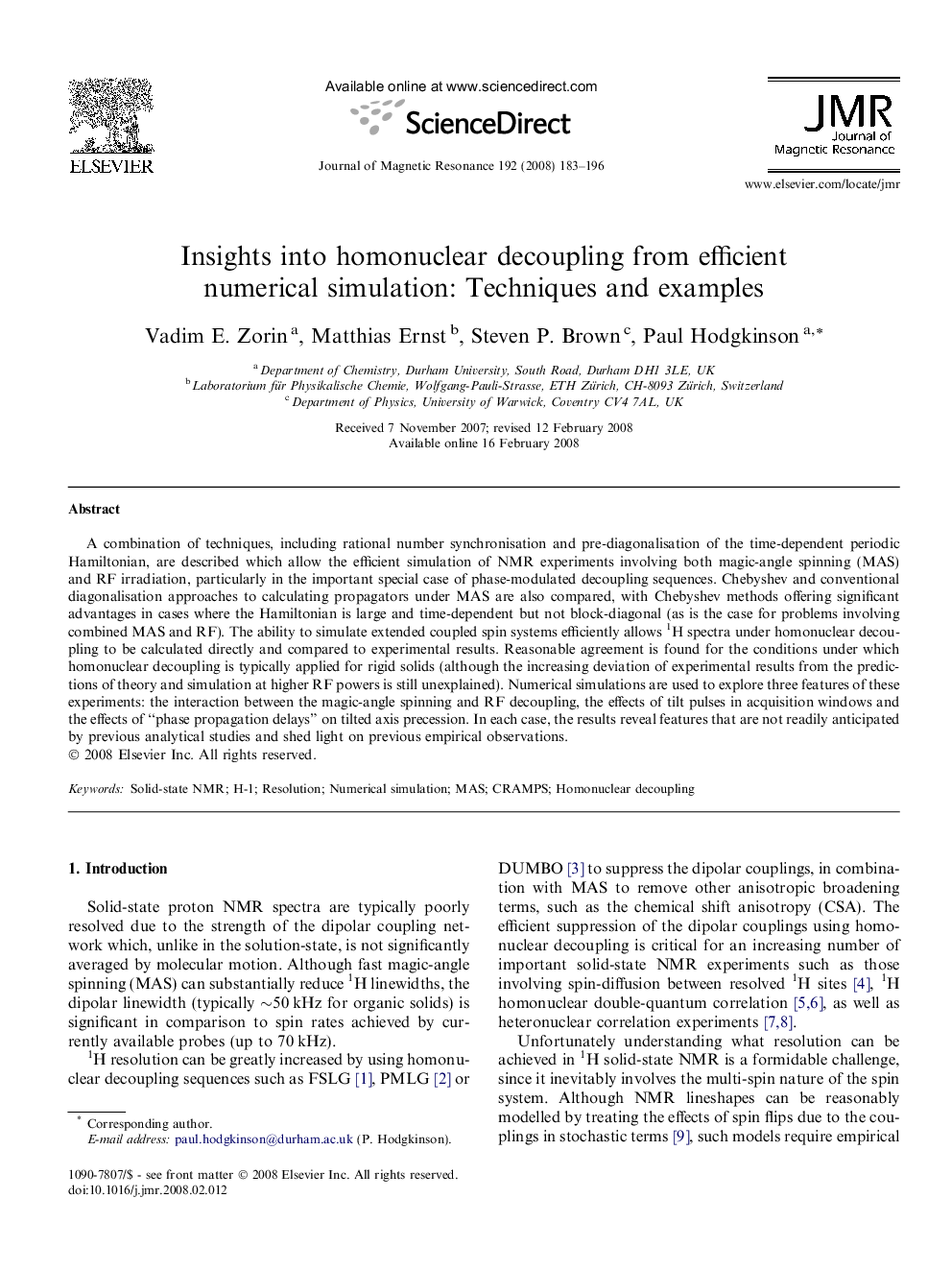| Article ID | Journal | Published Year | Pages | File Type |
|---|---|---|---|---|
| 5407222 | Journal of Magnetic Resonance | 2008 | 14 Pages |
Abstract
A combination of techniques, including rational number synchronisation and pre-diagonalisation of the time-dependent periodic Hamiltonian, are described which allow the efficient simulation of NMR experiments involving both magic-angle spinning (MAS) and RF irradiation, particularly in the important special case of phase-modulated decoupling sequences. Chebyshev and conventional diagonalisation approaches to calculating propagators under MAS are also compared, with Chebyshev methods offering significant advantages in cases where the Hamiltonian is large and time-dependent but not block-diagonal (as is the case for problems involving combined MAS and RF). The ability to simulate extended coupled spin systems efficiently allows 1H spectra under homonuclear decoupling to be calculated directly and compared to experimental results. Reasonable agreement is found for the conditions under which homonuclear decoupling is typically applied for rigid solids (although the increasing deviation of experimental results from the predictions of theory and simulation at higher RF powers is still unexplained). Numerical simulations are used to explore three features of these experiments: the interaction between the magic-angle spinning and RF decoupling, the effects of tilt pulses in acquisition windows and the effects of “phase propagation delays” on tilted axis precession. In each case, the results reveal features that are not readily anticipated by previous analytical studies and shed light on previous empirical observations.
Related Topics
Physical Sciences and Engineering
Chemistry
Physical and Theoretical Chemistry
Authors
Vadim E. Zorin, Matthias Ernst, Steven P. Brown, Paul Hodgkinson,
